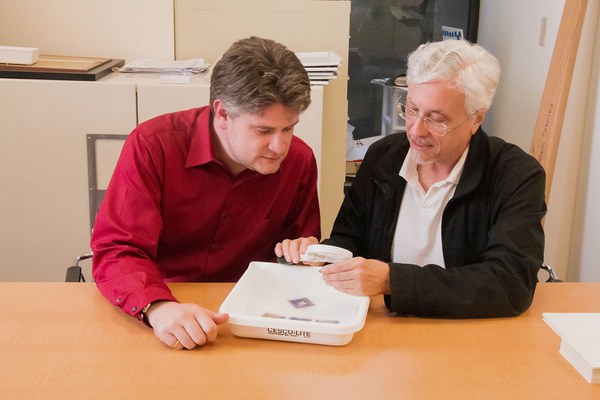By Lain Wilson
Inscriptions on lead seals are fundamental to the study of Byzantine individuals and institutions. They provide precious information about people and families that might otherwise be lost to history, and the offices, titles, and place names allow scholars to trace the development of the workings of the Byzantine state.
What, then, to make of seals that include none of this information?
This was the question John Cotsonis set himself beginning in the summer of 2015 as he catalogued a relatively small but significant part of Dumbarton Oaks’ 17,000-strong Byzantine lead seal collection. These 572 specimens include religious imagery—of Christ, the Virgin, various saints, or the cross—on both sides, with inscriptions identifying only the religious figures.
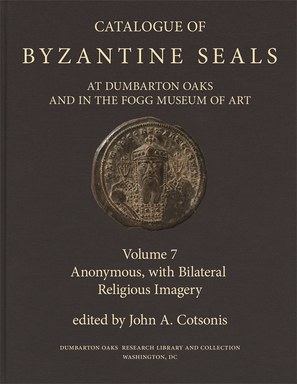
Now available in print as the seventh entry in the long-running series of catalogues of Byzantine seals at Dumbarton Oaks and the Fogg Museum of Art, Anonymous, with Bilateral Religious Imagery wrings as much information as possible from these small objects. In addition to an extended introduction and commentary, the print catalogue features new photography from Joe Mills. “Without Joe Mills’s beautiful and magnificent photographs,” Cotsonis notes, “this work would have been impossible.”
Cotsonis has published extensively on what seals contribute to our understanding of popular piety, the cult of saints, and gender. When John Nesbitt, former research associate in Byzantine sigillography at Dumbarton Oaks, alerted him to this almost entirely unpublished corpus, he was eager to take on the project, and his bona fides as an art historian and sigillographer made him the ideal person to approach these materials comprehensively.
Before cataloguing could proceed, a number of decisions needed to be made. How, for example, can we distinguish the obverse and reverse when the object lacks the normal criteria? More fundamentally, what do we call this group of seals? The anonymous attribution, for example, has been applied in the scholarly literature to those with figural imagery on both sides and to other types of seals, including ones bearing elaborate metrical inscriptions. In fact, the majority of anonymous seals use poems rather than bilateral iconography, suggesting the seals’ designs represented a meaningful choice by their owners. Given this, scholars should approach the iconography and the image pairings seriously as a way of studying the realms of cultural and personal piety.
These pairings could track general trends in Byzantine iconography. For example, Cotsonis notes that not only are the Virgin and Saint Nicholas the most depicted religious figures on seals in general, but they are the most frequently paired, demonstrating their popularity as intercessors in Byzantine devotional life. In addition to the pairing, the intimate and emotive depiction of the Virgin and Christ Child on BZS.1947.2.1801 parallels artistic and liturgical developments of the Komnenian period.
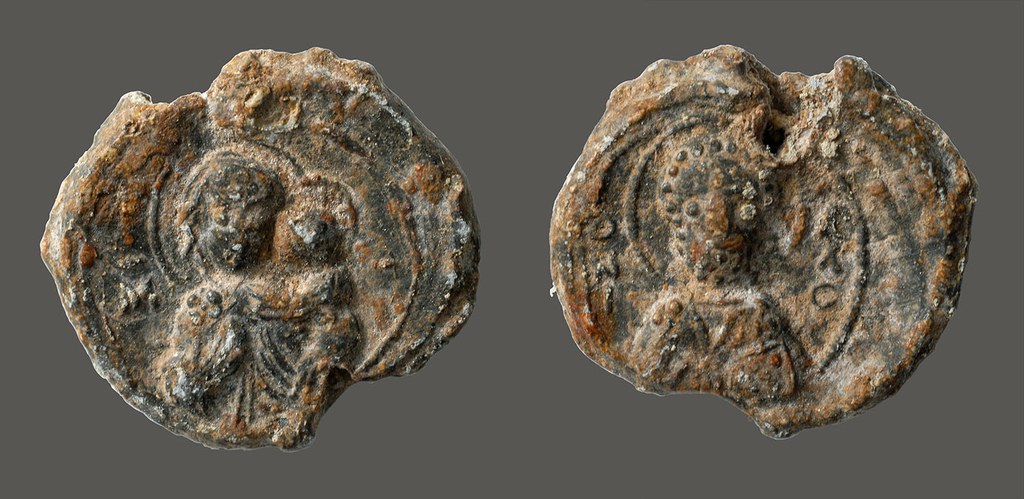
Other pairings, however, are rare or unique and raise interesting questions. The eleventh/twelfth-century BZS.1951.31.5.3449 depicts the Virgin Kalamiotissa and Saint Gerasimos, both unique sphragistic images. The pairing reflects two fifth-century religious foundations near the Jordan River—the monastery of the Virgin of the Kalamon and the nearby monastery founded by Gerasimos—which, by the eleventh century, were united and housed a miracle-working icon of the Virgin. We don’t know who this seal belonged to, but perhaps to a monk of the monastery or a pilgrim who had visited the icon.
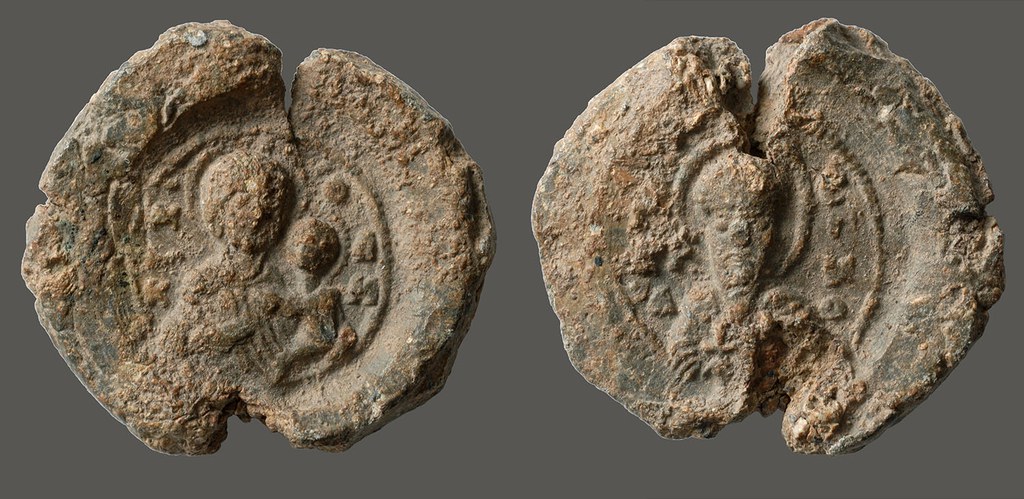
Although these seals are anonymous, comparing specific rare pairings with seals of known individuals can allow scholars to propose identifications. For example, BZS.1958.106.2849 combines rare depictions of the Crucifixion (on the obverse) and a Deesis with the Virgin and Christ, Saint Nicholas, and Saint Menas Kallikelados (on the reverse). The appearance of Saint Menas on seals is extraordinarily rare, and the majority of seals that include him are attributed to the nephew of Patriarch Michael Keroularios. The owner of an iconographically similar seal may also have been related to the Keroularios family, and this example was likely issued by a member of that family.
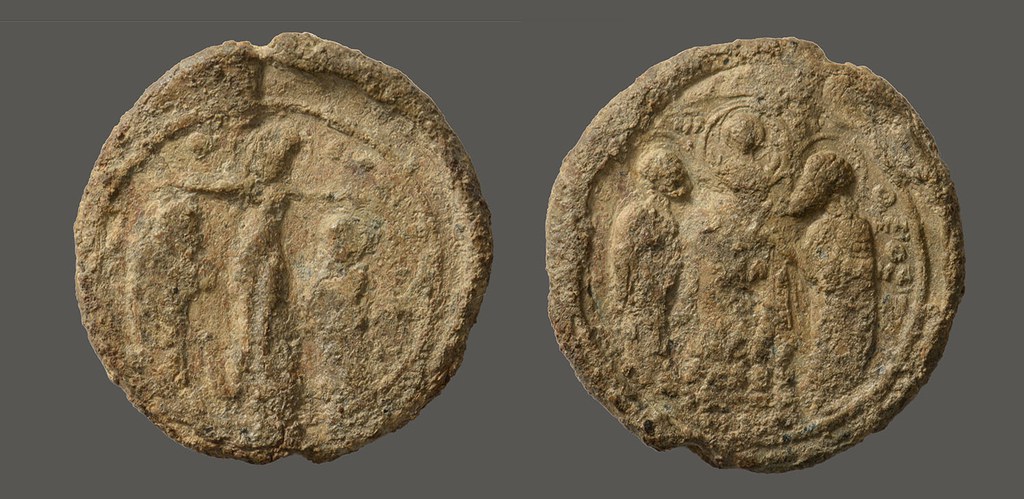
Ultimately, Cotsonis says this catalogue provides a wealth of new material for sigillographers and art historians, with rare and unique depictions of saints. Trends, especially for the eleventh and twelfth centuries, provide statistical data that can prove essential for researchers investigating the social or religious history of Byzantine culture. Most importantly, scholars can gain insight into the religious and devotional character of Byzantium in general and personal identity and piety in particular. Although largely wordless, these seals are hardly silent witnesses.
Lain Wilson is digital content manager. Photos by Joe Mills, staff photographer, and Elizabeth Muñoz Huber, 2018–2020 postgraduate digital media fellow.

